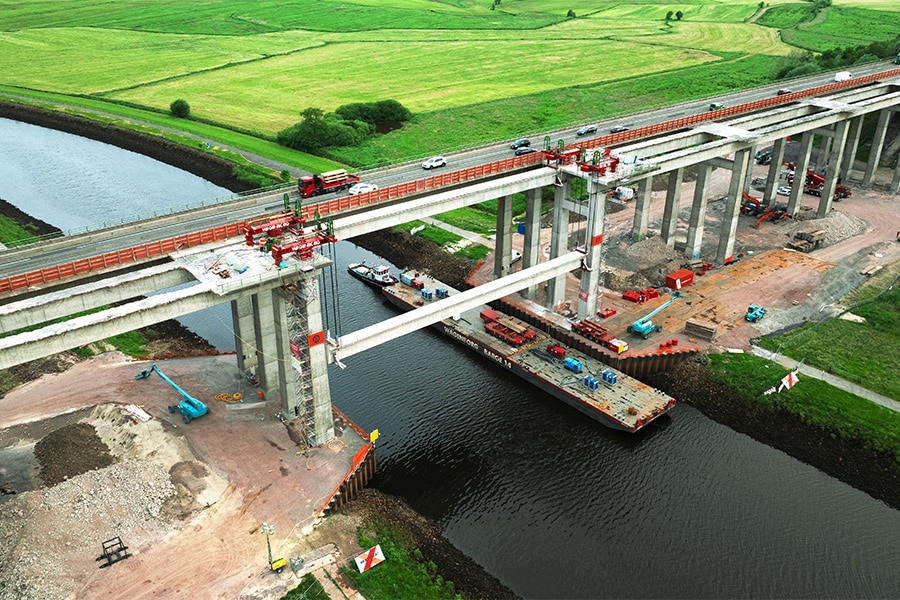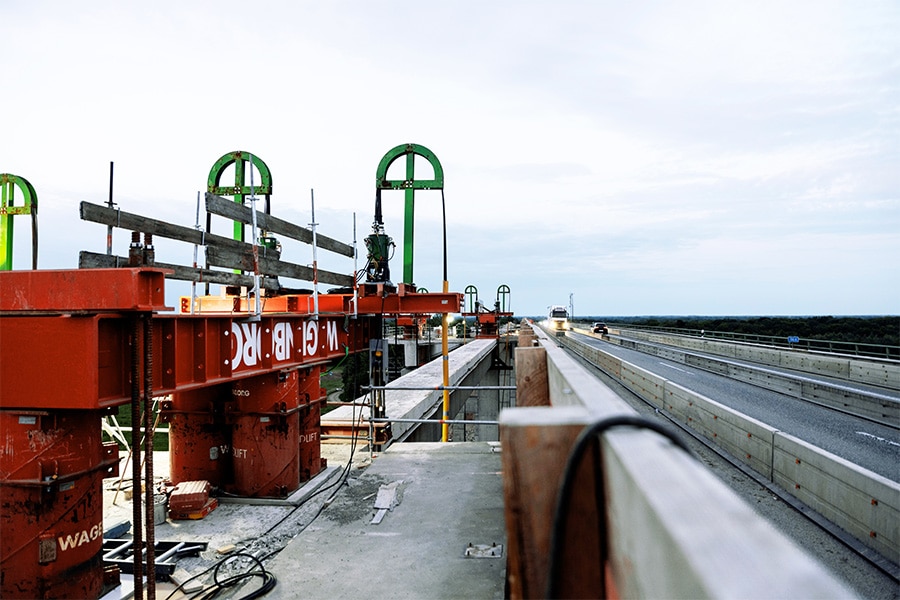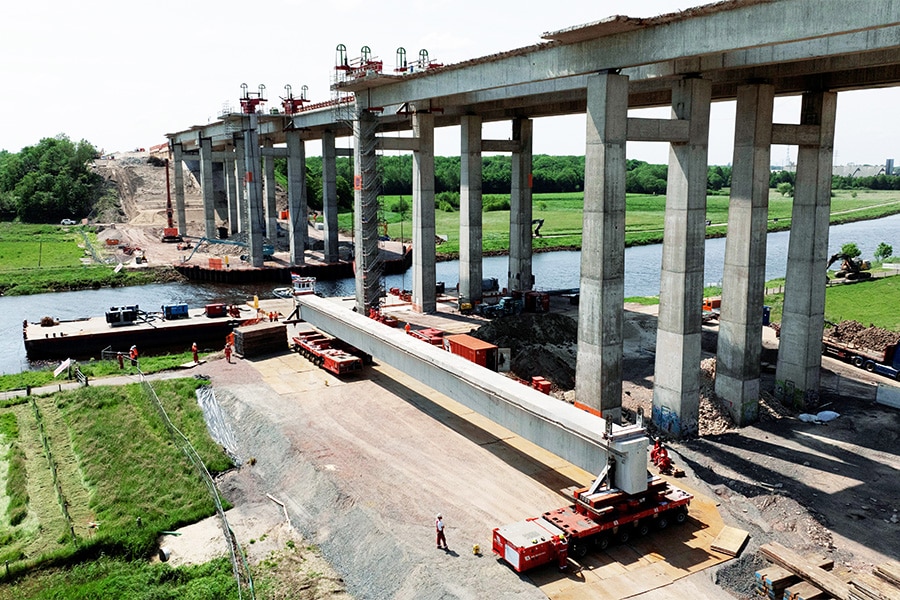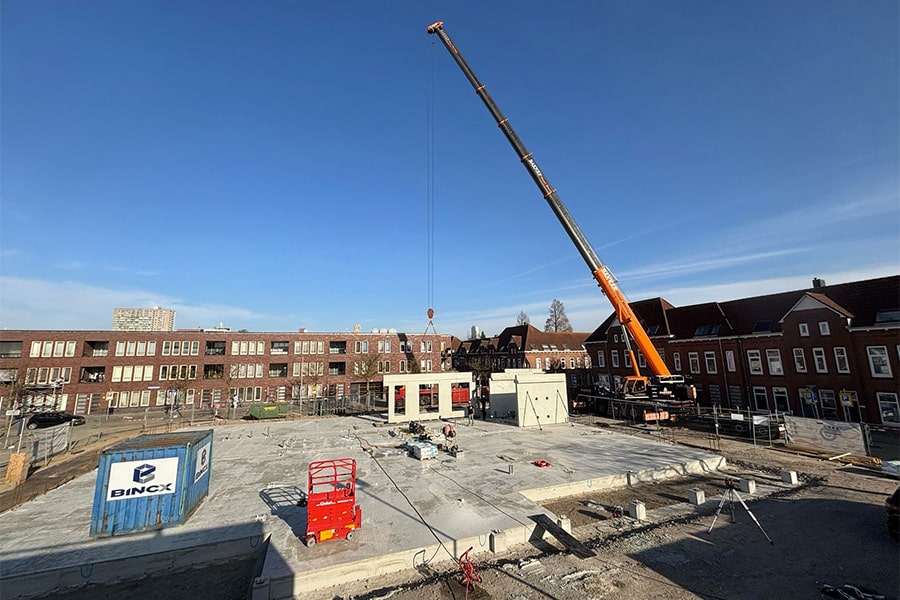
Dismantling girders Huntebrücke goes decimeter by decimeter
On the east side of the German town of Oldenburg in Lower Saxony, the A29 freeway crosses the river Hunte. In 1978, a 441-meter-long bridge, the Huntebrücke, was constructed for road traffic. Because this bridge no longer meets today's requirements, partly due to the greatly increased traffic load, the highway between Oldenburg-Ohmstede and Oldenburg-Hafen will be completely reconstructed and a new bridge will be built. The entire operation will take about six years and will be carried out one road section at a time. Currently, demolition and recycling company Moss is demolishing the first bridge. Wagenborg Nedlift has been hired to lower the 52-meter-long girders 30 meters above the river. Decimeter by decimeter.
The old Huntebrücke is a concrete structure with separate piers and girders for the separate carriageways. Most of the concrete structures are demolished with hydraulic hammers, pincers and scissors. The large girders above the river called for a more careful approach, partly to avoid demolition waste in the river and partly to leave the middle piers intact. "After all, these will be used as support when sliding in the new bridge," says Arjan Bossers, project manager at Wagenborg Nedlift. "We recently received the first 350-ton girder on land, which Moss has now completely demolished."

Beach jackets
Late last year, Wagenborg received the order to remove the two middle girders of the bridge in a controlled manner. "Six months in advance we started the preliminary process, in which we measured the objects properly and calculated, drew and made the dimensional parts with which we would complete the job," Bossers continued. "We use so-called beach jacks; hydraulic jacks that allow steel cables to be moved up or down in stages. The steel cables are cut to length for this project and are guided through the palm trees, as we call them, to the jacks. On the other side, the cables are attached to a structure that carries the girder. After Moss uses a diamond cord to pull the girders through, we can jack down the 350-ton girders at about ten inches per minute. This structure was prepared, erected and anchored on top of the piers in three weeks on site."

Tidal
Down below, the girder is picked up on the water by an SPMT with six double axles on a pontoon and on land on an SPMT with six single axles. Bossers: "We are quite far inland here, but there is still a tidal range of 2.5 meters. The lowering of the girders is therefore timed with high tide. Once down, the pontoon with girder is slowly sailed towards the quay. There, the large SPMT then drives onto land and the girder is jointly moved by the two vehicles to a demolition site set up by Moss a little further on. After the second girder, we sail the pontoon back. Most of the equipment goes back by road to Hengelo, Groningen or to another work site."
Wagenborg will return sometime in 2026 for the demolition of the western half of the bridge. In 2029, commissioning authority Autobahn GmbH des Bundes expects cars to be able to drive over the new Huntebrücke. It will have wider carriageways and 14 bridge piers instead of the current 36. This will make it possible to increase the navigable width under the bridge.



